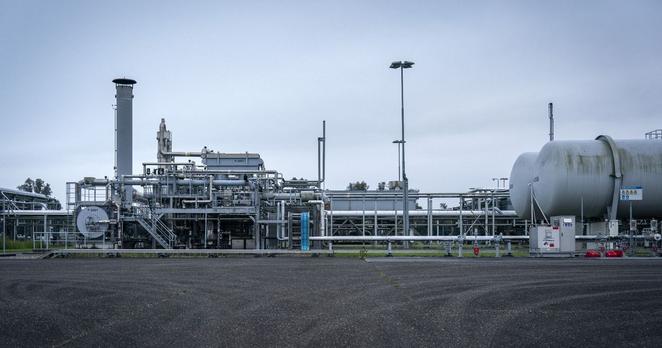#Sodm #ameland #wadden
https://www.omropfryslan.nl/nl/nieuws/17695043/gaswinning-ameland-onmiddellijk-stilgelegd-bijna-halve-meter-bodemverzakking
new paper: "The FAIR AOP roadmap for 2025: Advancing findability, accessibility, interoperability, and re-usability of adverse outcome pathways" https://doi.org/10.1016/j.comtox.2025.100368
"Herein current efforts in addressing the FAIRification of AOP mechanistic data and metadata, as well as the international, collaborative efforts to document, and improve the (re)-use and reliability of AOP information will be described."
En maar zeuren over teveel betaalde schades aan gedupeerden. En de boel maar traineren en vertragen.
#Shell en #Exxon, met natuurlijk de #NAM voorop, gaan vervolgens bij de Nederlandse Staat eisen indienen voor het gas, dat ze noodgedwongen in de bodem moesten laten zitten.
#gaswinning

De Nederlandse Aardolie Maatschappij (NAM) keert in totaal 3 miljard euro uit aan haar eigenaren Shell en het Amerikaanse ExxonMobil. Dat blijkt uit de jaarrekening van het gaswinningsbedrijf over 2024. Het is de eerste winstuitkering sinds 2017 die de twee aandeelhouders van de NAM krijgen. Beide ontvangen 1,5 miljard euro.
Wow, I love Guitarix + NAM. Really a game changer for... eh... my neighbors. But it sounds good, too!
Over the weekend I created #NAM (neural amp modeler) profile out of my Engl Powerball 2 and #IR (impulse response) out of my custom made #guitar cabinet with EVM12L Black Label edition. It sounds great, so I'll probably create video to document how to do it all. The #sound I'm getting out of it is great and in the future I hope I will stop using tube amps (I like the sound, hate the maintenance). To be honest, it requires good #audio equipment. I did document the process of creating NAM and IR, but I've got new info, hence the desire for video.
https://meka.rs/blog/2025/04/15/neural-amp-modeling/
https://meka.rs/blog/2025/05/11/impulse-response/
https://meka.rs/blog/2025/05/12/impulse-response-sweep/
Re-amping Let’s say you’re a guitar player and want to record your track of a song. Typically you would enter the studio with your guitar, amp and cabinet and spend record what’s needed. But let’s say you decide to record your guitar without any processing by pedals or amps, glue the good takes together and then process that track with pedals and amps. That process is called re-amping. Now let’s say you want that guitar track processed by a plugin, not hardware. The process of recording would be almost the same, but the process of getting the plugin to sound like an amp is quite a challenge. Today if we want to emulate the whole rig, it is best if it’s done in two parts: NAM and IR. IR is much older, and it stands for Impulse Response. NAM stands for Neural Amp Modeler and it’s just a few years old. IR is used to capture the sonic characteristic of reverb and guitar cabinets, the most. It can do other things, but for now let’s just say that IR in our case is used to emulate guitar cabinets. NAM in our case is used to capture and emulate preamp. It can also capture full rig but you can’t use any effects that are time based, like reverb or delay. The reason why I like NAM for preamp and IR for cabinet is because that way I can use IR cabinets captured over past two decades. As NAM is relatively new, it still doesn’t have such a huge ecosystem.
I use #Ardour for producing all my tracks, #Carla for testing and experimenting with plugins, #SurgeXT & #NoiseMaker as synths, various stuff by brummer10 (#guitarix, ratatouille, ...) and #NAM and #Aida for guitars, #LSP plugins for IRs and samplers etc. #x42plugins for EQ and MIDI processing, #Cardinal for sound design & a lot more #FLOSS tools and plugins.
Expanding the scope of the question, I use #FAUST and #DPF for writing my own plugins and use them in a lot of my tracks.
